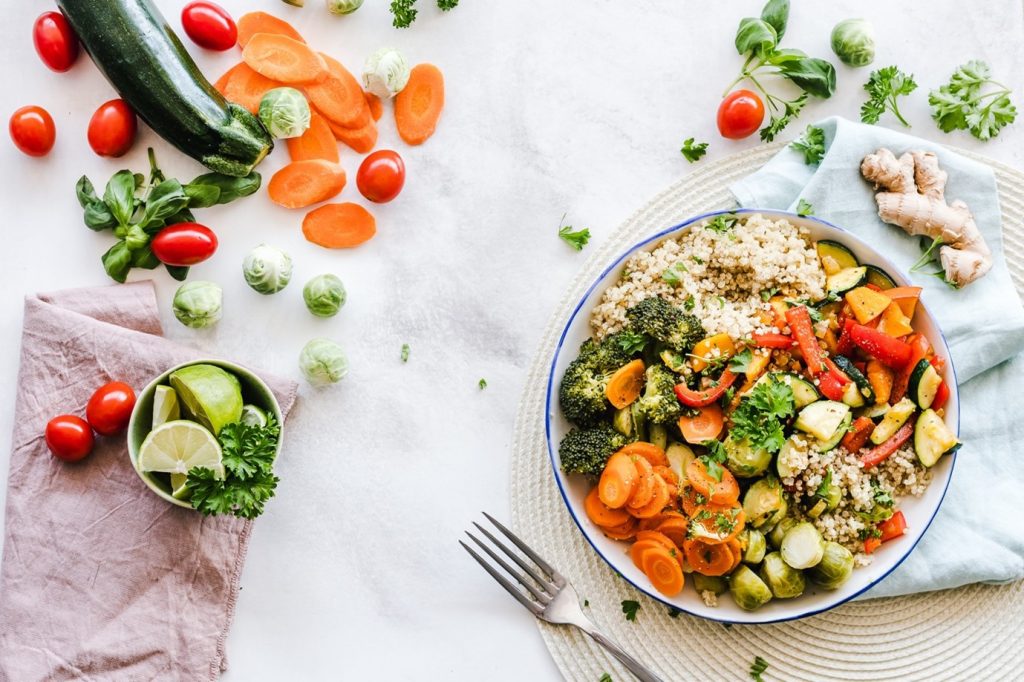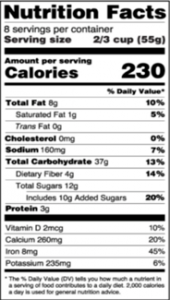Today’s reality
Unfortunately, recent research shows that almost 1 in 2 Greeks has high cholesterol without even knowing.
Research by the Hellenic Society of Nutrition in 2011 revealed that a growing number of Greeks don’t follow the Mediterranean diet, although experts worldwide deem it the healthiest diet in the world.
It is essential to count not only calories but also carbohydrates, fat, and sodium before a primary meal or snack. We want to share with you some tips that can make things simple.
Approach
We want to share our approach, which could help you make more informed decisions about your diet.
- Read the nutrition labels
labels on their packaging, where the total number of carbohydrates per serving is displayed. Pay special attention to the portion size.
If you’re dining at a restaurant, check the restaurant’s website or ask for the menu’s nutritional data. Keep these in mind:
- Determine the portion size.
- Quantities are based on 1
- Control the number of total c
- Total carbohydrates include sugars, starch, and fiber.
- You will need to estimate the carbohydrate content in foods or meals without a label.
Bear in mind that food labels can understate calories by 20%.
- Carbohydrates (carbs)
Measuring carbohydrates in your meals is very important because high consumption of carbs has adverse effects on obesity. Remember to measure the number of total carbohydrates in all your meals. Carbohydrates increase glucose faster than proteins or fats.
It is essential to know the type and amount of carbohydrates you consume to avoid steep increases or decreases in your blood glucose. Foods with a high glycemic index, like soft drinks and fruit juice, typically cause a rapid increase in blood glucose.
- Proteins and fats
Meals with high fat and protein (more than 15-20 grams) can slightly impact glucose levels after they are consumed. There are 2 types of fats that we get from the diet:
- Saturated
- Unsaturated
They are mainly found in animal products, such as beef and pork, and high-fat dairy products, such as butter, margarine, cream, and cheese. High amounts of saturated fats are also found in ready-made processed foods.
Unsaturated fats are healthy fats that are divided into 2 categories:
- Monounsaturated: monounsaturated fats are found in avocados, nuts such as almonds, and seeds such as sesame and sunflower seeds. They are also found in vegetable oils, such as olive oil.
- Polyunsaturated: polyunsaturated fats include omega-3 and omega-6 fatty acids. Polyunsaturated fats are found in vegetable oils, such as soybean oil and corn oil, in nuts, and fish, such as salmon and tuna.
Unlike saturated, unsaturated fats help increase HDL (good) cholesterol levels. Various studies have shown, however, that it is not adequate to just consume unsaturated fats. We must also limit the consumption of saturated fats.
A Harvard study published in March 2018 in the American Journal of Clinical Nutrition found that consuming monounsaturated fats, particularly from nuts and olive oil, reduces the risk of cardiovascular disease (particularly if these fats replace saturated fats and refined carbohydrates).
The researchers added that the benefits of consuming monounsaturated fats are limited if saturated fat consumption is also high.
- Alcoholic beverages
Many alcoholic beverages include carbs. Consumption by teenagers should be avoided.
Suggestions
The most effective way not to gain weight is intermittent fasting. This means eating in specific time frames during the day and not consuming anything with carbs in between.
It is, therefore, essential to be as concerned with the quality as with the quantity of the foods in our diet.
The average adult can consume 70g of fat per day, of which the saturated should not exceed 20g, and the rest (50g) should be unsaturated.
As a rule of thumb, the consumption of fats is denominated in percentages. Depending on the age and gender, the range of saturated fat consumption should be 25-40%, with an average value of 30-35%. Saturated fats ideally should be limited to below 10% of total daily calories.
The fastest way to reduce saturated fat consumption is by consuming less of the following foods (in brackets their daily contribution of saturated fat):
- Red meat and processed meats 15%
- Cake and Cookies 10%
- Cheese 9%
- Pizza 6%
- Butter 6%
- Milk 6%
- Chicken and Turkey 6%
- Chocolate 5%
- Eggs 5%
Because each of us has different nutritional needs, the only one who can determine your personalized diet plan is your dietitian-nutritionist.
Most of the time, we are what we eat, so we need to eat our food as medicine, or we will have to eat medicine like our food.




